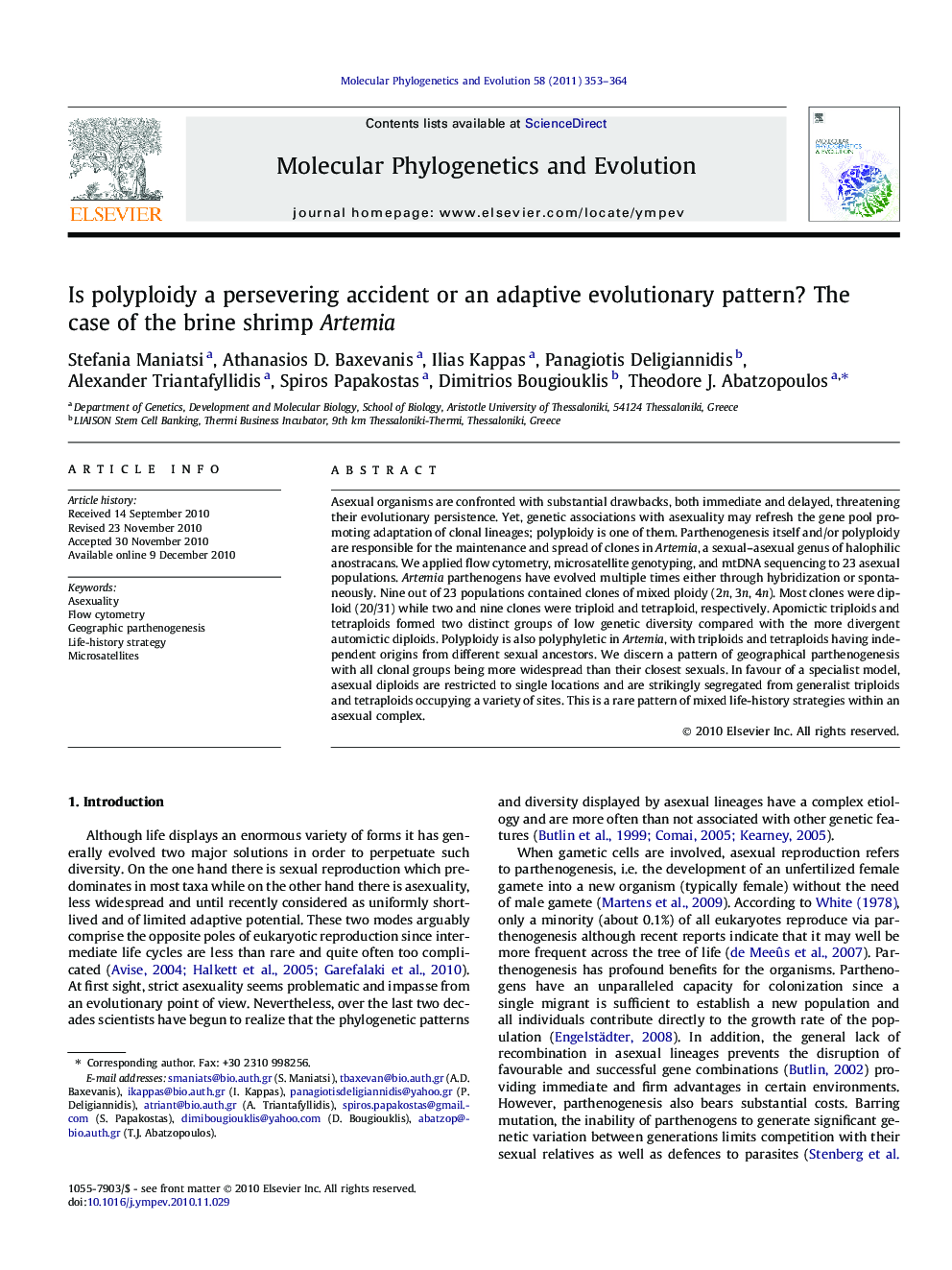| Article ID | Journal | Published Year | Pages | File Type |
|---|---|---|---|---|
| 5920801 | Molecular Phylogenetics and Evolution | 2011 | 12 Pages |
Asexual organisms are confronted with substantial drawbacks, both immediate and delayed, threatening their evolutionary persistence. Yet, genetic associations with asexuality may refresh the gene pool promoting adaptation of clonal lineages; polyploidy is one of them. Parthenogenesis itself and/or polyploidy are responsible for the maintenance and spread of clones in Artemia, a sexual-asexual genus of halophilic anostracans. We applied flow cytometry, microsatellite genotyping, and mtDNA sequencing to 23 asexual populations. Artemia parthenogens have evolved multiple times either through hybridization or spontaneously. Nine out of 23 populations contained clones of mixed ploidy (2n, 3n, 4n). Most clones were diploid (20/31) while two and nine clones were triploid and tetraploid, respectively. Apomictic triploids and tetraploids formed two distinct groups of low genetic diversity compared with the more divergent automictic diploids. Polyploidy is also polyphyletic in Artemia, with triploids and tetraploids having independent origins from different sexual ancestors. We discern a pattern of geographical parthenogenesis with all clonal groups being more widespread than their closest sexuals. In favour of a specialist model, asexual diploids are restricted to single locations and are strikingly segregated from generalist triploids and tetraploids occupying a variety of sites. This is a rare pattern of mixed life-history strategies within an asexual complex.
Graphical abstractDownload full-size imageResearch highlights⺠Flow cytometry, microsatellites, and mtDNA markers were applied to asexual Artemia. ⺠Parthenogenesis and polyploidy show polyphyletic origins. ⺠Triploids and tetraploids have originated independently from different sexual ancestors. ⺠Data indicate a pattern of geographical parthenogenesis within this asexual complex. ⺠Life-history strategies were inferred: specialist diploids vs. generalist tri- and tetraploids.
